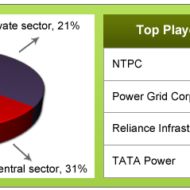Posted by Managementguru in Business Management, Motivation, Organisational behaviour, Principles of Management
on Mar 10th, 2014 | 0 comments

Motivation is one area where periodical updates are necessary for an organisation to gauge the morale and mood of their employees. Companies sometimes act very smart in that they break their hands by patting their own back. If you wish to propel your organisation forward, you need to satisfy your work force first. The million dollar question is a big “HOW?” Well, a problem properly diagnosed is half done. And this motivation thingy is not a problem at all. Keen observation and understanding is what is needed on a manager’s part to steer things in the right direction, that is good for the company. Man, even your kid will turn his back if you want to take control by unleashing your power. The right thing to do is to find out exactly how motivated they are. There are several things that come into the purview of motivation.Let us do this in a questionnaire format so that things might fall in place. Question No 1: What is that, that motivates an employee, to be more precise your employee? (This turns out to be the hot dissertation topic for many young MBA’s) Is it any one of the following? Financial rewards Clear Goals Connecting with others Rank Appreciation and Recognition Throat neck competition Job security Fear Results Excitement Variation or Diversity Principle of Motivation: Well, the principle of motivation is pretty much the same for all individuals. I 100 % go with Maslow’s hierarchial needs theory which travels right from physical needs at the base of the pyramid upto self realisation at the top. If this is the case,how come there is a disparity when everybody is subjected to the same kind of influence at the work place? For some it stops somewhere in the middle who are very much satisfied with the pay check figure and the perks that go with it. For some there is an inner drive that makes them unstoppable until they reach the pinnacle. This is the very thing that differentiates a manager from a subordinate. This is the very thing that distinguishes a CEO from a manager. This is the same thing that generates top business guns and management gurus who fall a genre apart form the rest of the crowd. Well, there are other factors such as the family background and the environmental influence that shaped up your personality all through. Motivation Surveys: Motivation surveys are not only important in getting to know your employees but also it showers a immaculate image on the company. It feels good for your workforce when they are involved and consulted with, on issues related to themselves. A recent Harvard review has stated that most of the managers feel that they really get motivated when there is : “Recognition for Good Work.” But folks, you will be surprised to know that the same review reveals another side of the coin, the top motivation for workers is when they make “Progress.” Again, call it the inner drive, impulse, motive, ambition, fire in belly, vigor, vitality…Getting to know your work force makes you “BOND WITH THEM” and it aids you in plugging the holes at the right place and at the right time. See, there is no bench mark for motivation, you respect your work force, treat them with dignity, communicate well and give them what they want and that’s it, you are defintely a winner. If you are a person capable of motivating your work force, you automatically become a source of inspiration. My humble suggestions to managers goes thus: 1. Make your employees understand what motivates them.( Kindly find what flares your temper before venturing into this exercise.!) 2....

Posted by Managementguru in Business Management, Marketing, Principles of Management
on Mar 4th, 2014 | 0 comments

The Realm of Product Innovation A manufacturer or a service provider, who aspires to be successful in a business market, must indulge himself in research, pertaining to consumer preference as well as the various stages of a product life cycle. This will give him a better chance to make his future decisions concerning the product and also the wisdom to evolve strategies accordingly. Developing a product and introducing it into the market demands certain amount of forethought and prudence. The first step is to study the market, to understand consumer preference as well as to gauge whether your product will be appealing to the customers existing in that market. The prerequisite for this would be market segmentation, that is to statistically estimate the demographic quotient (people belonging to different age groups and ethnic societies) of the sample population and decide on the customers whom you want to target. A product’s success depends mainly on two things: 1) Innovation-lateral thinking, by which you let loose of all your unorthodox methods and stick onto some novel ideas of marketing. 2) Customer-oriented marketing rather than product oriented. This customer oriented concept is advocated by modern marketing consultants and it has proven to be a fantastic proposition. More than the actual product, people like to know more about the values that they obtain out of that product. The secret behind success will be to hit the right note, by propagating more about the value added services that go with the product. Expectations Created by the Product When a product is introduced in a market, say, automobiles for example, since every tom, dick and harry is fond of cars and bikes and they talk a lot about it. It is looked upon by prospective customers with great expectations, which might be due to the great hype created by the manufacturer through advertisements in electronic media, papers and magazines. The product as it hits the market will instantaneously make it big, if it has the right mix of intangible and augmented benefits that make customers happy and they feel that they have bought something worth the money paid for. A luxury car is well received by the market, irrespective of the price tag that is stuck to it, just because of the value added benefits such as, delicacy, great speed, high-performance, safety, insurance and warranty. Product Pre-Launch Analysis Before launching a product, industry analysis is a must, as various similar products might exist and it comes to the question of how different and appealing your product is, for market acceptance. Even minor things can make a big difference, say, for instance, if you are able to float the cheapest car, in terms of price but with great fuel efficiency, the results are obvious. The strategy would be to introduce innovations not only in your product but also in your thinking. Best products emerge as a result of tuning in your wavelength with that of the consumers’. Product Life Cycle A product gets introduced, grows, matures, stabilises and slowly withers off, just like a human being. No man is eternal and so is a product. You may argue that some products are in the limelight for more than their share of lifetime. If you keenly observe, that would have been the result of makeover changes to the product in lieu of the change in people’s liking and analysis of market trend. Some products have a second chance to prove their mettle. They go into hibernation for a while and then re-enter when market conditions seems to be favorable. The perspective from which you look at the life cycle of a product may cast a different idea...

Posted by Managementguru in Economics
on Feb 17th, 2014 | 0 comments

Significance of Privatization Privatization that has gathered momentum since around the 1980’s has become the hallmark of the new wave of economic reforms sweeping across the world. It refers to the transfer of ownership or management of an enterprise from the hands of the public sector to private sector. It also means the withdrawal of the state from an industry or sector, partially or fully. Privatization marks a change from dogmatism to pragmatism and amounts to a reversal of policy. It is evident that the economic growth rate has multiplied ever since privatization has come into existence. What is Privatization? 1. The transfer of ownership of property or businesses from a government to a privately owned entity. 2. The transition from a publicly traded and owned company to a company which is privately owned and no longer trades publicly on a stock exchange. Performance of Public Sector: The performance of state owned enterprises in many countries have, by and large been far from satisfactory. This may be attributed to the prevalence of bureaucracy and red tapism in most of the public sector administration. They have often put large burdens on public budgets and external debt. Economic inefficiencies in the production activities with high costs of production, inability to innovate and costly delays in delivery of the goods produced are some of the shortcomings of the public sector. There is also ineffectiveness in the provision of goods and services such as failure to meet intended objectives, diversion of benefits to elite groups, and political interference in the management of enterprises. The relationship between the management and the labor unions is strained owing to the expansion of bureaucracy. Why Privatization? These problems have led many governments to undertake programmes of public sector reform. One Such reform is privatization of publicly managed activities to discard the inefficiencies and improve the economic growth rate. For privatization to succeed: Privatization cannot be sustained unless the political leadership is committed to and unless it reflects a shift in the preferences of the public arising out of dissatisfaction with the performance of other alternatives. Now-a-days, private sector enterprises have started dominating even core industries like petroleum, power and communication under the leadership of visionaries who may be the heads of the states or owners of such private organizations. Public services to be provided by the private sector must be specific or have a measurable outcome. Consumers should be able to link the benefits they receive from a service to the costs they pay for it. Since they will then shop more wisely for different services. Privately provided services should be less susceptible to fraud than government services if they are to be effective. Equity is an important consideration. Privatizing the state owned enterprises reduces corruption and the benefit goes to the society. The process encourages entrepreneurship and leads to intense development of capital market. Governments usually want to sell the least profitable enterprises, those that the private sector is not willing to buy at a price acceptable to the Government. The Government may even fear that if it gives a free rein to the private sector management, its power might be at stakes. All said and done most of the governments view privatization as an important strategy of economic...






